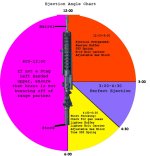Whose "they" that say the rifle is overgassed? I'd ask you what your signs of excessive bolt carrier velocity are, but you state the rifle has no issues. I think you have a solution in search of a problem.
Which direction is your brass ejecting and how far?
I don't have a solution in search of a problem. Actually; I don't have a problem. Is the M&P overgassed? Yes. I will look it up again, or you can, but the mil-spec gas tube port hole is i believe: .062" for a carbine. For a MID size, the port size is .073. However; the M&P is set up with a carbine gas system, but still has the .073 gas port. Now most times this is not a major issue; because 90%+ of anyone who is shooting a civilian AR style rifle, is shooting .223 ammo and not 5.56, (Which has greater pressure). As such; a little over-gassed is not a problem. Even if you shoot a lot of 5.56 ammo, it's not a major problem. Most specs give a variance for a 16" barrel to have a port diameter of between .062-.078. But the reason for the variance, is because most there is carbine length, mid length, and rifle length gas systems. Most 16" barrels, SHOULD have a "MID Gas system". But many, like the M&P don't. They have a Carbine length gas system. But the gas port is sized for the Mid Gas system.
Again; this is not a major problem. With most .223 ammo and even some weaker ammo like some of the russian, it ensures you'll never short stroke. You'll notice it a bit more with REAL 5.56 military ammo. For me, it's not because I have a problem. I simply like to tweak. As such, I got an ST-T2 buffer. It doesn't use weights that independently shift as the bolt recoils against it and into the spring. It has tungston shavings/powder, to has a smoother and more gradual shift. Also; it's about 4.2 oz compared to a standard carbine buffer that is 2.9-3.0 oz. So; the standard carbine buffer is expecting "X" amount of pressure of gas from a mid length gas system. Instead, it's receiving more gas, because the gas system is a carbine instead of mid-length, but it has the gas port diameter of the mid-length which is larger. Pretty basic math. shorter distance, larger hole, more gas. Means it's Over-Gassed. But again; for 99% of all people, it is not and will never be a problem. For a tweaker, we care. We tweak for smoother operation. I was just wondering if anyone here was using the ST-T2 buffer with any russian steel case ammo; which overall tends to be a little lower velocity than american brass ammo, and definitely less pressure than military 5.56 ammo.

